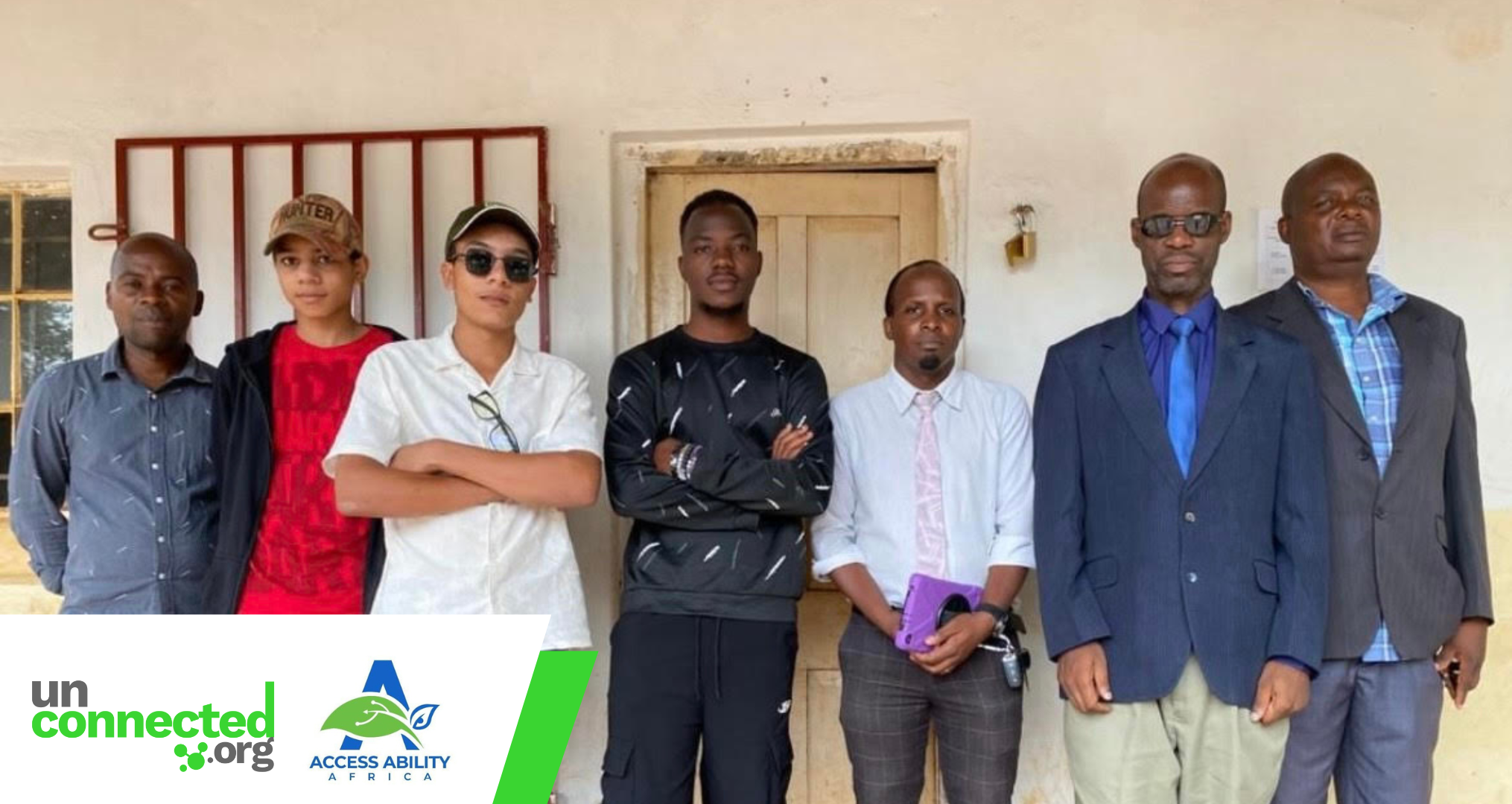Empowering Visually Impaired Learners Through Connectivity: A Conversation with Staff Nyoni
At unconnected.org, we believe that connectivity is more than just access to the internet. It is about creating opportunities, enabling learning, and opening doors that have long been closed for underserved communities. One remarkable example of this mission in action is the Blind Classroom initiative in Malawi, led by Staff Nyoni, a young ICT graduate with a vision to transform education for visually impaired learners.
From Personal Experience to Purpose
Staff Nyoni, 23, comes from Euthin Village in the Mzimba District of Malawi. While studying ICT and software engineering at Deayang University from 2019 to 2023, he witnessed firsthand the challenges faced by visually impaired individuals. Living with his grandfather, who was visually impaired, and later encountering a young girl in his community struggling to continue her schooling due to partial visual impairment, Staff felt compelled to act.
“I realised that education for visually impaired learners was not just limited to a few individuals. It was a widespread issue affecting many across Malawi and Africa. I knew my skills in software engineering could make a difference,” he shares.
The Birth of the Blind Classroom
The Blind Classroom is an assistive technology platform designed to provide visually impaired learners with access to quality education. Unlike traditional solutions, which often cater to older learners or those outside formal schooling, this system focuses on school-age students, providing personalised learning experiences that adapt to each learner’s pace.
The journey began in 2022, when Staff applied for a hackathon organised by Save the Children and Emerge Livelihood. From a simple concept on paper, he and his team developed the first prototype, which was tested at the Chilanga School for the Blind in Kasungu. The results were inspiring. Students engaged with the system eagerly, showing notable improvements in learning outcomes. One student, Peter, improved his English grade from 56 to 96 after using the platform.
Overcoming Challenges
Launching such an initiative was not without its hurdles. Staff recalls the fears he faced, including balancing lucrative job offers with his commitment to the project, and addressing misconceptions in communities where technology is sometimes viewed as a threat to jobs.
“The system is not here to replace teachers but to support them, to ensure learners are not left behind. Engaging stakeholders and gaining their trust has been challenging, but the impact we are seeing makes it all worthwhile,” Staff explains.
How the Blind Classroom Improves Learning
The platform promotes independence and self-learning, allowing students to study at their own pace while still participating in classroom activities. It also alleviates the scarcity of Braille materials, enabling teachers to integrate visually impaired and sighted students in the same lessons.
Students themselves have voiced the difference it makes. As Samuel Jigapo from Chilanga School shares:
“I would like to express and to comment on the importance of this ICD information. This ICD information has improved us to acquire more vocabulary, to improve learning skills, and to promote independent learning in our class. For example, it has improved us when we are on our own. It has helped us learn easily without teachers, to know more words in our classroom, and it will promote more participation when doing things together.”
“Students are excited to use the system. In one school, older students even encouraged younger ones to try it. It shows the genuine engagement and interest it sparks,” Staff adds.
Partnership and Collaboration: Key to Scaling Impact
Staff emphasises the importance of collaboration in scaling the initiative. Partnerships, like the one with Access Ability Africa, help reduce costs, provide infrastructure, and ensure sustainability beyond donor funding. By working together, organisations can make a lasting impact on communities and expand the reach of digital learning tools.
“We believe in a collaborative approach. Together, we can move faster, reach more schools, and ensure the system remains sustainable,” Staff notes.
The Power of Connectivity
The Blind Classroom is a testament to how connectivity, combined with innovative solutions, can transform education. It is not just about giving students devices or internet access. It is about creating meaningful, measurable impact in their lives.
As Staff Nyoni and his team continue to expand the Blind Classroom to more schools, their story is a powerful reminder that digital access is a right, and when paired with purpose-driven technology, it can change lives.



